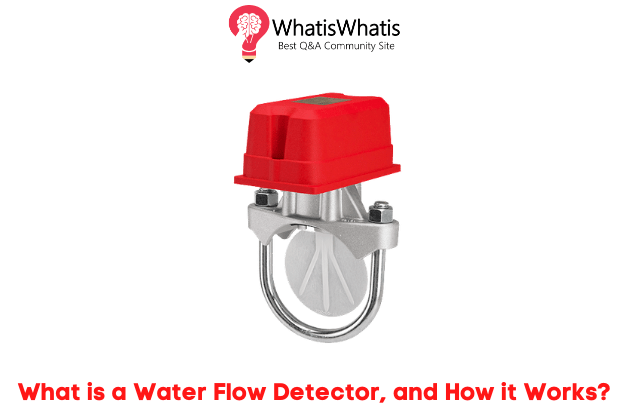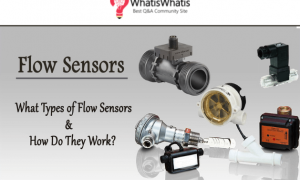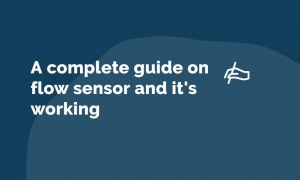Every firm strives to automate its systems. It helps to improve the efficiency, reliability, and accuracy of the system. It also helps to increase the profit margin. Many industries dealing with water flow install water flow detector for flow management. However, not everyone understands what a flow detector is.
It is essential to understand all the tools you need for flow management. They help in automatic water systems.
What is a Flow Sensor?
A flow sensor is a device you use to detect the flow rate of fluids in a flow channel. You use a flow sensor if you need action taken. You can use it when you need to send an alarm, switch on or off the fluid source.
Water sensors are small tools. You can install them into the flow channel. Other times, you install them on the outer surface of the flow channel.
There are several types of water flow detector in the market. Their functions and uses match several water properties; You select a water sensor depending on the results you need.
See more: How To Choose the Best Thermal flow Switches?
Various firms, residential units, and commercial buildings require a constant supply of water. There are several uses of water in these areas. Thus, as a manager, you need to know the amount of water that goes into these buildings. You can quickly get the results with a simple flow meter.
However, there are some times you will need to switch on and switch off water intake. It is expensive to have a supervisor on standby all the time. There may be a need for action when the supervisor is away. That’s when you know you need to automate the water flow system.
A flow sensor allows you to monitor the supply of water to various areas remotely. You need to check the flow rate constantly. Sometimes, the flow rate reduces, and you need real-time readings to know whether the water supply is enough. A flow sensor will give you real-time water flow rate readings.
You install the sensor at the water source or water channel near the source. It allows you to account for all water supplied. Thus, you get to see the amount you supply in one direction before there is any water wastage.
Some people use the regular flow meter as a flow sensor. It works well as long as you don’t need swift action to close or open the water source.
How does a Flow Sensor Work?
Different flow detectors have different working principles. We will look at each type and how they work.
Paddle Wheel Sensors
This is the most common water flow sensor. It is cost-effective when you calculate the buying price and installation. It is useful when you don’t need high accuracy.
You buy a paddlewheel sensor with flow fittings or insertions. You use it on water and other water-like fluids.
A paddlewheel sensor has a rotor that you insert in the flow sensor. These qualities it as a mechanical sensor since it has a moving part. Thus, it would help if you used it with clean water and other clean water-like fluids.
The paddlewheel senses the flow rate by the number of revolutions made per second. Then the flow rate is high. The rotor rotates fast. It reduces the speed with a reduction in flow rate. It can send a signal when the flow rate drops.
Magnetic Flow Sensors
Magnetic flow sensors are non-mechanical as they have no moving parts. They are not insertion types; You attach them to the outer surface of the flow channel. They are not common in gauging clean water. However, you can still use them with clean water and water-like fluids. You can use the sensor in a factory setting as opposed to residential and business blocks.
A magnetic sensor creates a magnetic field that intersects the flow channel. The conductive fluid passes the magnetic fluid and produces a voltage. The amount of voltage is directly proportional to the speed of flow. You get the flow rate gauge as volumetric flow.
These sensors have an average accuracy. Thus, it would be great to use them in a firm that needs high precision. The flow sensor can turn off if you turn it near its electrical conductivity limit.
Know more: How Liquid flow sensor Works Accurate in Flow Measurement?
Ultrasonic Flow Sensor
These are meters that you use with dirty water like sewage. They do not have a moving part, and you install them on the outer surface of a flow channel. You don’t need to have a metallic channel to install them.
Ultrasonic meters use sound waves to detect the speed of water within the channel. It releases the signals that are, in turn, carried by the particles in the water. That’s why the meter can not work with pure fluids.
The sensor creates a frequency wave in the flow channel. This is known as the doppler effect.
Positive Displacement Flow Sensors
These meters are standard where you do not have a straight channel to install the sensor. It works by holding a known volume of water and releasing it. The rate at which it releases the held volumes determines the volumetric flow rate.
You can use the sensor in all types of fluids. They are very accurate; hence you can use them in sensitive industries.
There are several types of PD flow sensors. Let’s go through them below.
Oscillating Piston
These sensors have two or three pistons that take turns to gauge a known amount of fluid. The oscillation increases with an increase in flow rate.
Gear
There’s a wide range of gear sensors in the market. The inner gears rotate as the fluid passes through them. The different gear meters have names that describe their internal shape.
Helical Gear
These gears have the shape of a helix. It works on the basic principle of gear sensors. What makes it different from other gear meters is the shape.
Rotary Vane
The gear has a propeller that holds more than two vanes. They rotate depending on the speed of the fluid.
Diaphragm
This has one diaphragm that holds water and releases it with each rotation.
Oval Gear
The type has a gear with two ovals—the oval gears alternate releasing the amount of water that holds with each rotation.
Also Read: A complete guide on Rotameter and its benefits
Conclusion
Flow measurement requires you to have the right tools. A water flow detector has various uses; You can use them in various liquids of different viscosities. Their principles are simple, depending on their designs.





Leave a comment